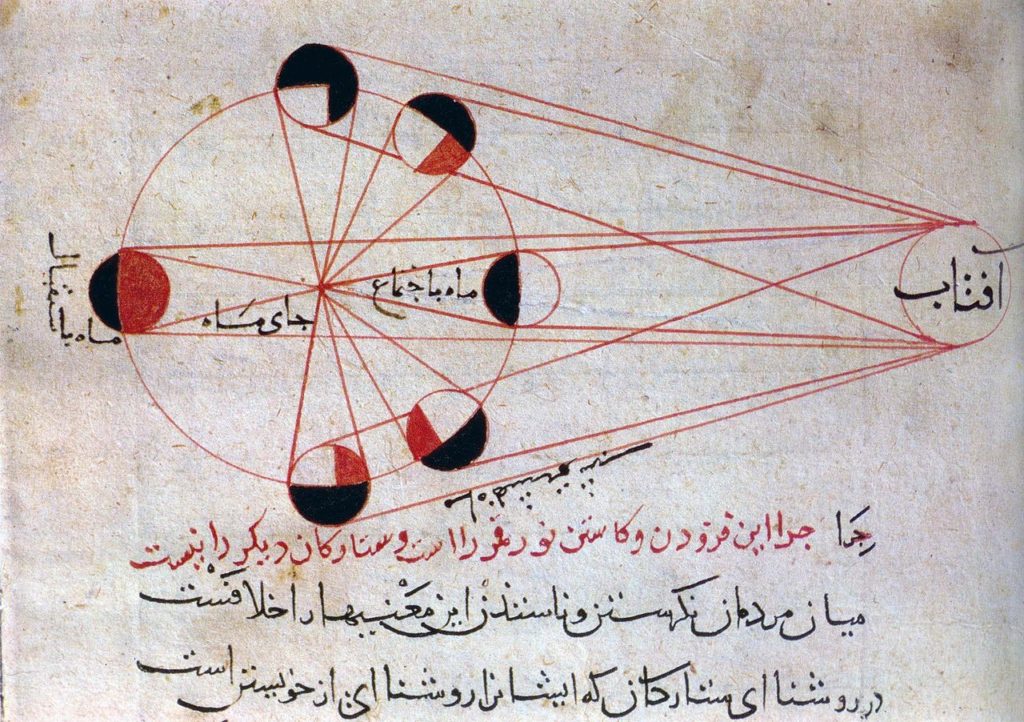2.3.7 Astronomy and Astrology

Illustration of different phases of the moon, from manuscript of the Kitab al-Tafhim by Al-Biruni (973-1048).
During the medieval period, scientists in the Islamic world made many contributions to the field of astronomy. While their work was based on ancient sources from Greece, Iran, and India, they updated methods for measuring and calculating the movement of heavenly bodies, and continued to develop models of the universe and the movements of the planets within it. Between the eighth and tenth centuries, Baghdad was a major center of study under the Abbasid caliphs al-Mansur (r. 754–75) and al-Ma’mun (r. 813–33), but local rulers across the region, in Cairo, Rayy, Isfahan, and other cities, also supported scientific research… (The Met, 2011).
Read: Astronomy and Astrology in the Medieval Islamic World // The Met
- What are examples of Islamic practices that led to advances in astronomy? Why did they lead to such advances?
- Why did some Muslims believe astrology went against Islamic teaching? Why do you think these arguments failed to stymie the practice of astrology amongst Muslims?
Photo: “Illustration of different phases of the moon, from manuscript of the Kitab al-Tafhim by Al-Biruni (973-1048).” Photo Credit: Wikimedia Commons user Laurascudder. Public domain.


